API In Modern Travel Technology
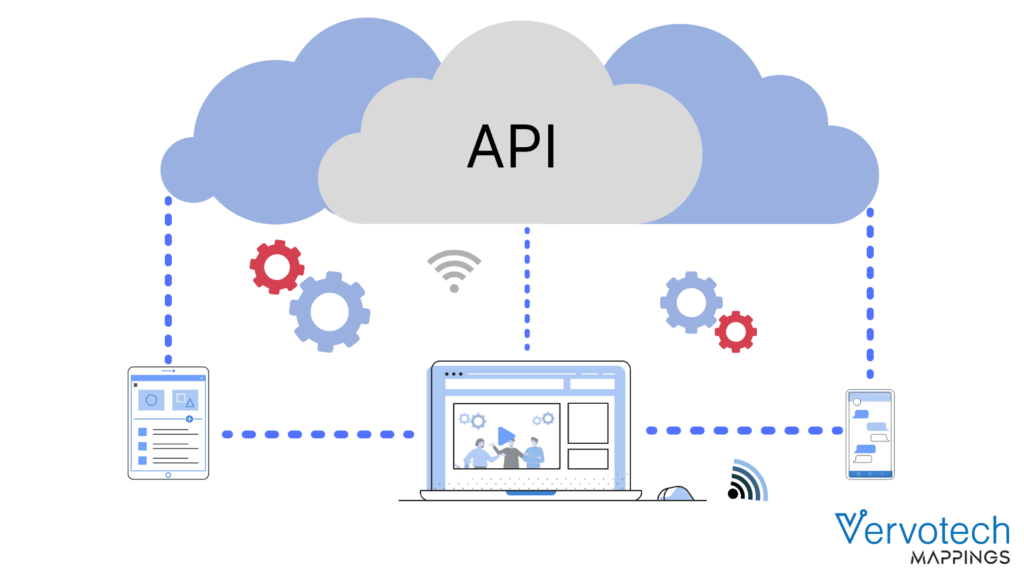
The advent of the internet and the resulting boom of social media has impacted our daily lives in ways we cannot even comprehend – long gone are the days when people needed to queue up in long lines waiting for their chance at availing themselves any service, they can now simply book it off the internet. The various advantages and quality of life upgrades that the internet has brought about has successfully managed to push us into the digital era, an era where the entire world is seamlessly connected. Therefore, the most valuable resource in present times is perhaps information, the control of which provides entities with certain advantages that cannot be matched by any other source. Making this said information available to potential customers as efficiently and as accurately as possible to enhance their experience in any given platform and provide them with certain value-added benefits ensures greater profits and a certain competitive advantage. As a result, there are now various technology companies trying to make this process as efficient as possible. According to a study by FuelTravel, customers make 20 to 30 website visits on average when availing of any service in the travel and hospitality industry. However, the study also showed that out of those 30 website visits, only 4.4 visits were unique. This shows that customers prefer availing all of their services from a single source if possible, through an ‘all-in-one platform’ as it provides maximum efficiency. Keeping this in mind, the key industry players have already started sharing and collaborating in terms of content not only to enhance the overall experience of their intended target market but also to increase their reach to other potential markets. This has resulted in an environment where more and more companies are now sharing data more openly to reap the benefits of a more connected system and make their products and services available to a greater number of audiences. What is API? The term ‘API’ is becoming extremely relevant in the modern scenario of technology firms and business owners must understand the exact meaning of this term to incorporate the same into their products and services. API, or Application Programming Interface, allows different companies to link software components without tweaking the source code. In other words, APIs allow connecting different data streams so that products can share certain features or functionalities. Going back to the results of the data, customers tend to book all their required services from one single platform since it provides them with maximum efficiency. Now consider a customer trying to book a hotel and then a cab service to that hotel – does the hotel provider provide cab services in addition to their basic service or does it make more sense to link another company that provides a cab service directly into their booking website so that the customers can directly avail that service? This is essentially the problem statement that Uber was trying to solve in 2014 when they made their ‘Request a Ride’ function available to other companies to integrate into their systems. With this simple integration, customers could book an Uber from any other platform that had the service integrated thus providing both companies with an added advantage over their competitors that did not have such integration. Fast forward to 2021, Uber’s revolutionary new feature has more or less become a staple across all related platforms. Now that we have a better understanding of API and the ways it can enhance modern businesses, let’s look at some of the advantages that API provides and the ways modern businesses are implementing it to their advantage. Advantages of API In addition to the enhanced customer experience, one of the biggest advantages of integrating APIs into an existing system is the significant reduction of costs when compared to alternative solutions. Companies can take advantage of various APIs without major changes to their existing platform thus allowing them to scale their businesses effectively. Following are some of the advantages that APIs can provide businesses in a modern context: Automation: By integrating various APIs, it is possible for a company to entirely automate most of their processes. This significantly reduces the manpower required to carry out the various processes of the company thus reducing overall operating costs. Application: APIs can be integrated into various ways depending on the needs and the requirements of the company thus making the delivery of services and the scope of the company more flexible. Scope: As discussed earlier, integration of various APIs can significantly increase the scope of any given business by making more services available to the end-user thus enhancing their experience. Information: The modern business scenario is driven by information. By integrating various APIs into one’s system, it is possible for them to intrusively gather data from various sources accurately and without discrepancies. This allows for smoother operation and better decision-making in the long run. Efficiency: To continuously improve one’s services, one needs to be extremely efficient when it comes to the delivery of their services. APIs, by automating various systems, can make the entire process more efficient thus driving customer experience. Integration: APIs allow for embedding content from various sources thus ensuring fluid content delivery and an integrated user experience. Personalization: It is essential that the products and services that are offered by companies are personalized according to the needs and wants of the target market. By integrating various APIs into the existing mix, a company can provide an extremely intuitive and personalized experience for their customers. Adaptation: When addressing the various needs and wants of any given target market, it is also essential to keep in mind the various trends that drive customer choice and need. Therefore, the needs and wants of any given target group will change over time and orienting the various products and services of a company according to the same can be a very tedious task. APIs can help a business make such changes quickly and without risks by allowing content from various sources to be integrated into their existing thus allowing the
What Is Global Distribution System in Hotel Industry, Anyway?
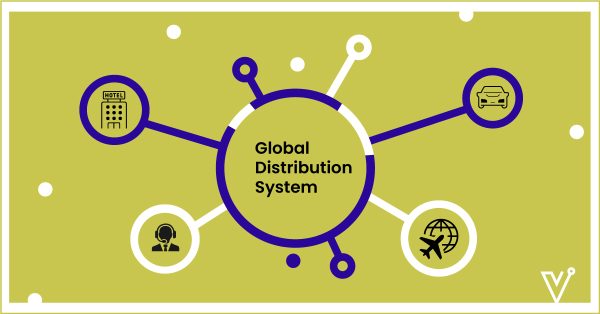
The idea of a global distribution system evolved from the highly cumbersome and inefficient booking system the travel industry was following. Until, 1960 if a travel agent had to make a reservation for a flight, he needed to call an airline, and airline staff would take hours to shuffle through documents and find if there was space available for a particular route and time. While the demand for air travel was growing, some airlines developed their own booking system. American Airlines was the first in the batch. The airline partnered with IBM and developed Automated Business Research Environment (SABRE) technology. The technology helped the airline widen its access to more travel agents, which ultimately translated into more customers. Soon enough, other lines also followed suit, the likes of British Airways and Delta also started using the electronic booking system. In 1970, The Westin became the first hotel to have an electronic reservation system called Westron. But the reservation system was not open for travel agents or agencies, and only hotel employees could use it. Then 1976 came as a watershed moment for the Global Distribution System in Hotel Industry when a travel agency got access to SABRE. By the end of 1985, about 10,000 travel agencies were using SABRE. Eventually, in 1992, an owner of America based reservation system joined hands with the European system to build the world’s first Global Distribution System. How does Global Distribution System in Hotel Industry Work? Global Distribution system works as an intermediary dealer between a travel agent and a hotel’s (or airline’s) online reservation system. A GDS does not have its own inventory, and it directly uses the hotel’s data to make changes. It allows travel agents to fetch real-time prices and inventory for a particular hotel. A Global Distribution System in Hotel Industry simply enables travel agents to look through the hotel’s system and gather important information like available room types, prices, and restrictions. Unlike the 60s, now, if a travel agent books a room, the GDS automatically removes the room from the hotel’s system. A travel agent no longer needs to check with hotel staff, and hotel staff no longer need to flip through documents to find if a room is available in their hotel. That’s the change GDS brought in the hotel reservation ecosystem. Today, Global Distribution System in Hotel Industry is widely used to tap the corporate customers. The Benefits of Using Global Distribution System in the Hotel Industry The primary goal of the Global Distribution System in the Hotel Industry is to help travel agents/agencies find hotel rooms that fit their requirements. It’s a B2B system that travel companies use to get real-time availability of rooms and other travel arrangements and make it available for their customers planning to travel. As a hotel, if you are not getting enough traction from travellers, signing up with a GDS can be a great idea. Let’s understand in slightly greater detail how the Global Distribution System in the Hotel Industry can help your hotel business. Increased Bookings through Travel Agents Many corporates even today rely on travel agents to make accommodation arrangements for their employees, rather than having someone in-house who manages travel arrangements. More than 60,000 active travel agents use the global distribution system to make bookings. Thus, signing up the GDS offer hotels a wide net of recurring customers. An Opportunity to Lean Hotel Staff Apart from the exposure that hotels get, Global Distribution System in the Hotel Industry also makes booking easier. The system has real-time access to the hotel’s booking system, and it instantly informs the hotel once an agent books accommodation. It removes that entry from the hotel’s room inventory. So, it frees up a lot of hotel administrative staff, creating a positive-sum game for the hotels. A hotel can use this opportunity to lean their staff or deploy them to a place where they can create more value. Recommended: Top Hotel Mapping Tools Leading the Market in 2022 A Less Expensive Alternative to Marketing However, hotels have to pay a joining fee to set up an account with a hotel distribution system, but it’s much cheaper than what a hotel chain may have to pay for marketing to up their booking numbers. Also, as mentioned previously, with GDS, you get many corporate recurring customers. That’s an added advantage. From agents having to call the hotel staff to directly making bookings, things have dramatically changed ever since the emergence of the Global Distribution System in the Hotel Industry. The system continues to be relevant, offering information, value and profits to both agents and hotels.
Mice for hoteliers: Four ways to attract mice tourists

Meetings, Incentives, Conferences, and Events – This is a MICE full form in hotel industry, and as a hotelier, you are very much accustomed to this abbreviation too. MICE tourism constitutes an important part of business travel, and the market is growing rapidly at a CAGR of 21 and is expected to hit a valuation of 1337.4 billion USD by 2028. Therefore, it’s a massive opportunity for all hotel businesses. While attracting quality MICE tourists is still a demanding task. You would already be nurturing your leads from your hotel CRM. But are you identifying your market accurately? Are you keeping pace with the changing demands of MICE tourists? If the answer is no and you are still trying to figure it out, we got you covered. Here, in this blog post, we recommend four ways to attract quality MICE tourists, which will maximize your revenues and capitalize on the opportunity we mentioned at the start of this article. But before we get there, let’s first evaluate the increasing Importance of MICE for accommodation businesses. Why does MICE matter more now? MICE, as an ancillary revenue source, is not new. It has been there for decades. So, you would think, why put extra weight on MICE now? What is new there? The fact that MICE matter more now is because there is a tectonic shift in how business travelers look at MICE tourism. MICE is becoming a cultural need of businesses. Everybody wants to network and cash in on the opportunities that networks bring. So, it creates a balanced win-win situation for both hoteliers and corporate firms. Therefore, if you want to double down your MICE business, it is the best time. As we mentioned earlier, the market is growing at a CAGR of 21%. And the growth is ubiquitous. Earlier, only North America was leading the charge, but now Europe Is also increasing spending on MICE tourism. So, the opportunity is enormous. But to make it count, you must ensure that your offerings match your customers’ expectations. And your services are tailored to the demands of tourists. Once these variables are in place, you will be fine on the demand side. Global Mice Market Report, 2022-28, shows that as many as 85% of US meetings are happening at hotels and lodging venues. And as established earlier, the trend is the same across the globe. Four smart ways to attract MICE Tourists So far, in this article, we have looked at the demand side—the increasing Importance of mice for hoteliers. Now we head on to address the elephant in the room, which is attracting, right, high-paying MICE tourists. There are many marketing strategies that you can use to attract these tourists, but we’ll make it short for you. And breakdown into four parts. 1. Define your market by identifying your strengths You can only sell a proposition once you have a market in sight. All businesses have some competitive edges, and you will have yours. Define your market by highlighting the category of clients more likely to buy the value proposition you have to offer; it could be your strategic location, the customizable space you have, or any other unique feature of your properties that give you a competitive advantage over others. 2. Allocate more resources to promising markets After the primary differentiation of the market, you now must look at the countries where the popularity of MICE tourism is growing. Adjust your digital ad budgets and allocate more resources to those promising markets. For example, now, MICE tourism is on the rise in Europe. So, your marketing spending should be the highest in European countries. In short, your marketing spending in any location should be proportionate to the demands coming from those locations. 3. Create a unique sales space for MICE tourists Once you sell a unique value proposition, the customers expect a unique experience. They want to know how serious you are about your services. It would be best if you could create a separate website for your MICE customers. If not, create a neat and clean landing page where all your unique propositions are clearly mentioned. Also, position yourself as a business that prefers MICE tourists. 4. Nurture relationships to get return customers MICE is an ongoing activity, so if you can cheer your customer on their first visit. And make them feel warm and welcome. They will likely come back to you as returning customers and spread word of mouth. Even if it costs you a few bucks more – keep your customers satisfied. Because businesses also don’t want many experiments, they want to go to the places they are familiar with. So, try to create an experience that they want to have again. Recommended: Blue ocean strategy for the hotel industry: A way to carve out new market Wrapping Up! To summarize, we looked at the prospects of the MICE market, which are excellent. We also looked at the rate and trends to set expectations right for what you can expect from the market worldwide. Then we talked about the enormity of the opportunity and discussed strategies on how you can make use of this opportunity by attracting quality customers and earning recurring revenues. All our recommendations are easily implementable, so make the best use of them.
AI-Driven Content Distribution & Management in Travel and Hospitality
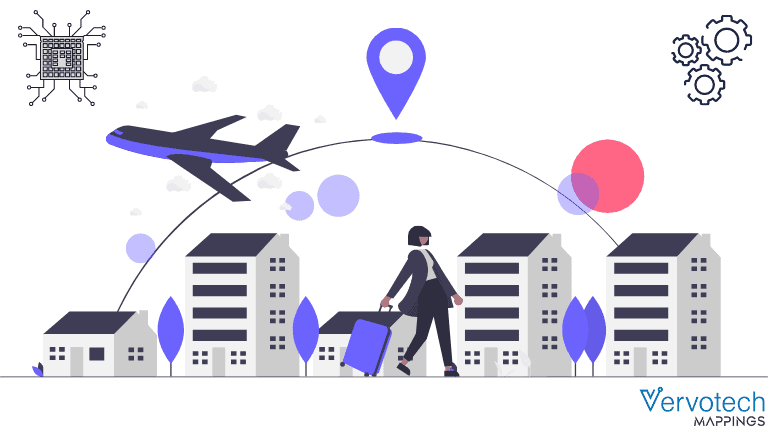
AI-Driven Content Distribution and Management is very important as we are entering into a new world of possibilities – the era of technological innovation! With major advancements in the technological capabilities of businesses, the limits are being pushed harder and further than ever before and at the core of this new world of possibilities, lies the twin pair of AI and ML, the holy grail and the hottest topic of discussion across global business circles. Therefore, it is essential that businesses today not only understand the meaning of these two terms and the ways that they are constantly impacting their industries but also incorporate the same into their existing mix so as to remain relevant within their market. So, what exactly are AI and ML? How are AI and ML being used by modern businesses when it comes to managing and distributing their content across their networks? These are some of the questions that we come across frequently, so let’s take a closer look at these two terms and strive to unravel the secrets behind the pair! What is AI and ML? AI or Artificial Intelligence, as the name suggests, is the simulation of human intelligence by modern machines through the process of repeated learning, correcting and reasoning. A machine, while being incapable of making decisions by itself, can process a large number of data sets quickly in order to reach certain conclusions. Once such conclusions are met, a machine can quickly identify whether that conclusion is favourable or unfavourable in nature. If the conclusion is unfavourable, the machine can quickly repeat the entire process till a favourable condition is met. Once this condition is met, the machine then registers that process and can apply it each time to reach a favourable conclusion without fail. This is called Machine Learning. Therefore, it can be seen that Artificial Intelligence and Machine Learning are intricately linked to each other where the application of Machine Learning leads to further models of AI with progressive levels of intelligence. We can then safely conclude that Machine Learning is a subset of Artificial Intelligence that continuously feeds computer systems with large amounts of data so that they can build relationships between data-sets and apply the same to the data-sets that are being fed. AI and ML in Travel and Hospitality Systems in the travel and hospitality sector aren’t much different – companies are increasingly applying AI-Driven Content Distribution into their technologies so as to make the systems faster and more efficient. When working with large sets of data, software that relies on AI and ML can quickly quantify data-sets in order to reach meaningful conclusions thus making the entire system extremely fast and accurate. For example, a supplier may be delivering content to multiple different sources multiple times a week. Since listings change quickly, it is essential that this data or content is constantly updated so as to provide the best possible listings to customers and cut down on losses due to erroneous listings. Here, a supplier may use AI and ML to automate the entire process where new listings will be automatically sent to specified points thus cutting down on valuable time and resources. Modern travel agencies need to constantly update their platforms and reflect the latest changes in bookings so as provide their customers with the most updated and accurate data possible. However, most of these travel agencies tend to work with multiple suppliers who are feeding data into their systems continuously. It is quite understandable that duplicates and inconsistencies will be present in the data when it is being consolidated from multiple sources. Therefore, this travel agency may apply AI-Driven Content Distribution in order to consolidate all incoming data and quickly identify the duplicates and get rid of them then and there. As it can be seen from the above two examples, AI and ML can be applied in every field in order to make the process more efficient, fast and intuitive. Whether you are a supplier who is supplying data to multiple sources or a travel agency that is consolidating data from multiple suppliers, you can use incorporate AI and ML into your existing systems in order to make them more efficient. AI and ML in Vervotech Mappings We, at Vervotech, believe in the power of technology to transform the entire value chain. With that thought process in mind, we developed Vervotech Mapping, a fully automated hotel and room mapping service that leverages the power of AI and ML to sustain coverage of 98% with an unmatched accuracy of 99.999%. These figures would not have been achievable without the incorporation of AI and ML into the mix. This divine pair has allowed us to not only develop a software that is able to automatically filter all incoming content for duplicates but also updates its servers through cloud-based systems multiple times a day so that our clients have access to the latest data possible. We are building and maintaining supervised and unsupervised ML models for augmentation and algorithm improvements. If you want to learn more about the ways Vervotech Mappings can help your business grow, click here for a guided tour of our features and services. Our support staff is always online and will be happy to guide you through the entire process!Vervotech Mappings is a leading Hotel Mapping and Room Mapping API that leverages the power of AI and ML to quickly and accurately identify each property listing through the verification of multiple parameters. With one of the industry’s best coverage of 98% and an accuracy of 99.999%, Vervotech Mappings is quickly becoming the mapping software of choice for all leading global companies operating in the travel and hospitality industry. To learn more about Vervotech Mappings and the ways it can enhance your business in the long run contact us: sales@vervotech.com
Room Mapping – A Modern Tech
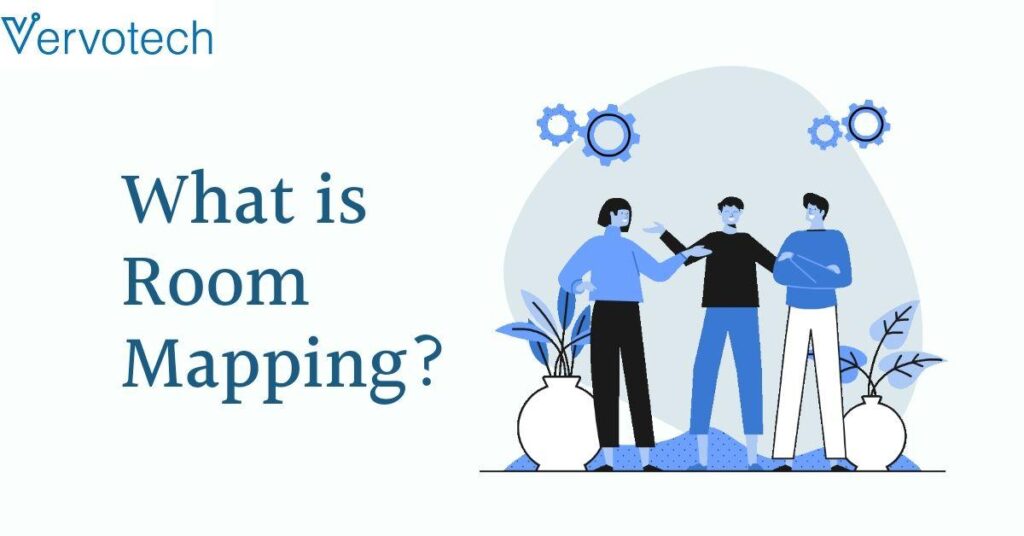
The turn of the millennium brought with it several technologies that completely transformed the global business environment. Technologies such as the internet and social media provided a lot of advantages to many businesses that were aware of the potential of these new media. As a result, the companies that were able to incorporate these newer technologies like Hotel and Room Mapping into their existing mixes enjoyed a certain competitive edge over the companies that relied heavily on traditional technologies. The travel and hospitality sector is no stranger to such changes having constantly transformed itself through the ages depending on the needs and requirements of society. The advent of the internet and social media platforms enabled travel and hospitality providers with a much-needed platform to showcase their listings. The 2000s saw the rise of several online travel agencies that aggressively expanded their markets in new and emerging markets due to the rapid boom of the travel industry. There were several reasons behind the shift in the industry: Shorter travel time between locations Better communication between long distances Easier access to information New and emerging markets in Asia, Latin America and Africa New opportunities through strategic business ventures Rise of the niche industries A shift in the mentality and psyche of people People are much more open towards online booking platforms today when compared to the general population before the internet revolution. This is because the internet provides people with a direct channel to market their products and services thus leading to better relationships between the provider and the consumer. Therefore, niche industries found their footing leading to a lot of more people travelling regularly for their business needs. The hospitality providers needed to understand the shift in the market and orient their ways to better meet the needs and want of their target market. Several technology companies started operations to meet these growing needs of the business when it came to optimizing their business practices. If businesses were to evolve into the digital era, they needed to do away with their archaic technologies and incorporate these newer ones to reach more audiences and provide better services. The shift towards an online business model by travel agencies was a step in the right direction but since the market was new, these companies struggled to find the most optimal ways to sell their products. What is Room Mapping? Room mapping has emerged in the 21st century as one of the leading services in the field that has more or less become a staple over the years. Mapping in the industry ensures accurate and precise data flow between various nodes thus removing duplicate and erroneous listings on any given platform. With modern cloud-based systems being able to handle thousands of transactions simultaneously, the need for proper, updated and unique listings on one’s platform is greater than ever. When a supplier or an OTA works with multiple suppliers or provides data to multiple other sources, mapping that same data and updating it across all channels can become an extremely tedious process. Hotel and room mapping APIs automate the entire process so that inconsistencies within the system can be removed with a simple click. Online Travel Agencies face the issue of duplication when it comes to rooms listed on their website. Every data provider provides each room of a hotel differently but in reality, the same room is listed multiple times with different attributes. Room duplication is a tedious problem since every supplier has different standards when it comes to offering room data. Room Mapping aims to improve the customer experience while finding the right room and optimizes profitability for the business. Room mapping is a process of identifying room level data via multiple parameters, detecting which room listings are the same and discarding duplicate results. It is carried out to display rooms accurately meanwhile sorting them by various filters according to the user’s preference. It is crucial to uniquely identify categories across multiple providers along with Room type, Description, Room ID, Amenities, Bed type, Policy, and much more for a better customer experience. Why Room Mapping? One of the biggest challenges faced by the travel fraternity is the lack of any global standard when it comes to distributing content. Each channel focuses on its own set of rules when distributing content and this makes it extremely hard for suppliers to consolidate the data that is being sent out. It has been established through years of research and simulation that cross table mapping is a multi-step process, i.e., the travel businesses usually send their data to a data management company which then converts that content into their own set of codes which are then represented in a huge XLS table. This process alone, if not automated, can take up to a month depending on the type of data that is being consolidated. This mapped data that is consolidated is then sent to the various travel businesses for sale on their marketplace. As the number of listings and overall conversions on platforms increases, manually mapping and updating this data is next to impossible. An automated AI dependent algorithm that instantly maps the data that is being consolidated across various supplier points will readily fasten up the process of mapping. Therefore, room mapping is quickly turning out to be one of the most essential and critical technologies in the travel industry, the absence of which can vehemently hamper the overall potential of any given business. If you want to read more about the history of room mapping and the attributes that you need to focus on, you can read our blog here that discusses in detail the role of accuracy and coverage in room mapping and the ways it can make or break modern travel businesses. You can also click here to learn more about us at Vervotech and the ways our AI-based room mapping API, Vervotech Mappings, are helping leading travel businesses worldwide consolidate their content.Vervotech Mappings is a leading Hotel Mapping and Room Mapping API that leverages the power of AI and ML to
3 Ways Metaverse Can Impact the Accommodation Industry
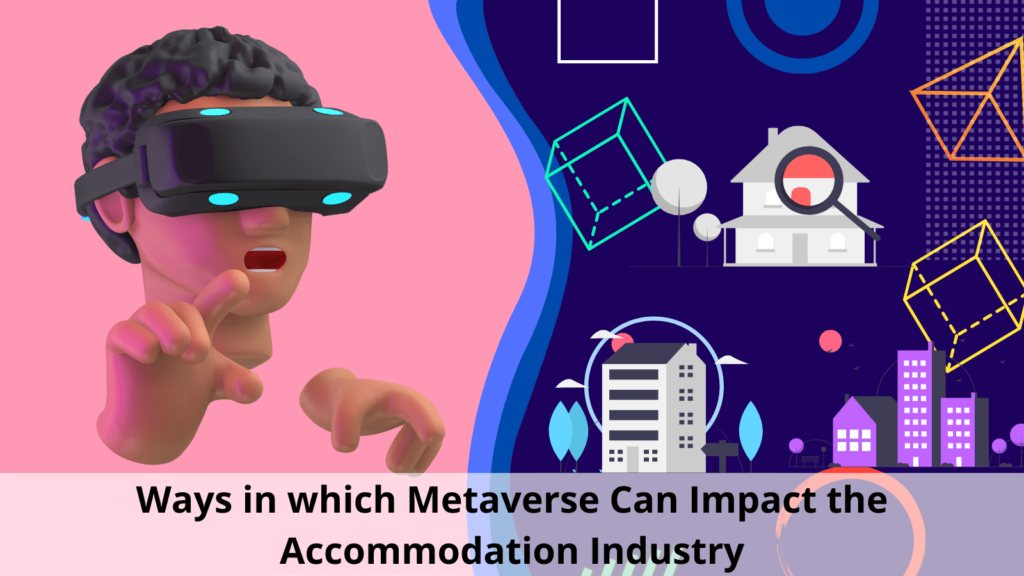
Metaverse has become the hottest buzzword that has gained popularity within a few months of its announcement. It is expected to become the next Internet revolution. Thanks to Mark Zuckerberg, CEO of Facebook who unveiled the rebranding of his social networking company Facebook to Meta Platforms. Ever since the announcement, metaverse has got everyone’s attention. From brands such as Adidas, Nike to tech companies such as Microsoft, Nvidia, every company wants a slice of the metaverse. According to a Bloomberg Intelligence report, the metaverse market is expected to reach $800 billion by 2024. What is Metaverse? Metaverse was first coined in 1992, by sci-fi author Neal Stephenson in his novel Snow Crash, where he envisioned a digital 3D world in which users turned into avatars and interacted in a shared online space. It is a parallel interactive world that leverages augmented reality (AR), virtual reality (VR), and mixed reality (MR) where users can virtually live within a digital world with the help of digital avatars. It will be more like our real world, where people can play games, celebrate birthday parties, go to a concert, work, shop and even own a piece of land! However, everything about metaverse is hypothetical, yet. The irony is despite being hypothetical for now, It has seen massive investments. For example, in late November 2021, digital asset investor Tokens.com purchased a virtual plot of land in the Decentraland metaverse platform for $2.4 million worth of cryptocurrency. And digital real-estate is just soaring high, making it a multitrillion-dollar market. Even though we are years away from it, the investments and rapid developments could make it a reality soon. And after retail and tech companies’ big bets on the virtual world, the hospitality industry must definitely try to incorporate metaverse too. Metaverse in Hospitality Industry Global travelers rely heavily on modern technology, especially the younger generations such as millennials and Gen Zs. From mobile check-in, bots, to QR-coded menus, technology has become the backbone of a successful guest experience. Metaverse can take the personalized guest experience to the next level. If hotels bring a flavor of a metaverse in their customer experience strategy, then there could be a huge potential for them to improve their business performance and revenue. Let’s find out three ways metaverse can transform the accommodation space. 1. Redefine guest booking experience When the modern traveler plans for any holiday trip, they expect a smooth and memorable journey. And it begins right from accommodation research. With metaverse, OTAs and hoteliers can provide their customers with a first-hand experience of room booking, such as room size, amenities, value-added services, etc. This ‘try before you buy’ experience will give a sense of confidence to the traveler before booking their stay. Additionally, this will increase the direct booking rate and improve business revenues. Recommended: Five Ways World Travel Industry Digitalizing Journeys 2. 3D virtual hotel tours Who wouldn’t love a virtual hotel or resort tour before finalizing a hotel property for a holiday or business trip? Many companies offer virtual, 360-degree, 3D hotel tours to attract visitors, but with metaverse in place, travelers can be transported to the hotel property and virtually walk through the entire property and decide whether it matches their tastes. This will make it easier for them to choose and help hoteliers to gain more customers and get an edge over their competitors. 3. Virtual itinerary According to a new study, more than eight in ten American Gen Z and millennial travelers desire a unique experience for their next trip. With metaverse, hotels and resorts can give their guests a virtual itinerary about the nearby landmarks, museums, historical sights, etc. that can enrich their experience. Additionally, hotels can even offer personalized itineraries based on their needs and likings, which will improve guest engagement and help hotels remain competitive. Recommended: Five Emerging Technology Trends in Travel Industry What is the Future of Metaverse? Metaverse in the hospitality industry will create a personalized experience that will build brand loyalty. Currently, there is a mixed reaction for metaverse in the hospitality industry. Thought leaders are seeing a huge market for metaverse, while some believe it can’t replace the feeling of authentic traveling through digitization. However, consumers, especially the younger generations are excited about metaverse. Once metaverse is in action, only the early adopters can reap its benefits. Now is the time to identify where and how can the accommodation industry accommodate metaverse to satisfy the changing needs of tech-savvy travelers.Vervotech Mappings is a leading Hotel Mapping and Room Mapping API that leverages the power of AI and ML to quickly and accurately identify each property listing through the verification of multiple parameters. With one of the industry’s best coverage of 98% and an accuracy of 99.999%, Vervotech Mappings is quickly becoming the mapping software of choice for all leading global companies operating in the travel and hospitality industry. To learn more about Vervotech Mappings and the ways it can enhance your business in the long run contact us: sales@vervotech.com
Big Data in Travel
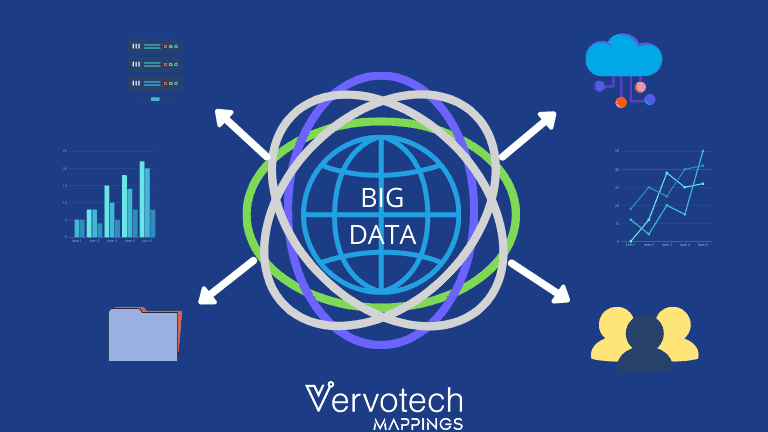
The modern trade environment is a mix of various factors that are continuously interacting with each other in an ever-increasing manner. How do stakeholders keep up with the changes that are affecting their immediate business market in order to understand the needs and wants of the customer to innovate and stay relevant? One of these factors is big data – a term that is increasingly gaining relevance in a modern context. With that thought, I am writing about big data and the various ways it is transforming businesses. What is Big Data? Big data means exactly as the name suggests – big data or data that has been accumulated over time which has resulted in a large quantity of the same. If we want to get a bit more technical, we can define big data as the evolution and use of technologies that provide the right user at the right time with the right information from a mass of data that has been growing exponentially for a long time in our society. As we all know, information plays a critical role in today’s society and the entities that have access to the right information has a certain competitive advantage in the market. With major developments in technology, the needs and the wants of consumers worldwide are changing rapidly along with the channels that they use to avail these products. It is now possible for one to avail services or purchase products right from the comfort of their own homes, a concept that was quite alien even a couple of decades ago. However, with the world being increasingly connected through the emergence of the internet of things, people are growing more used to their devices being always connected to the internet. This not only provides them with access to certain products and services, it also provides companies with a key opportunity to reach these customers through these innovative new channels. How can one then make use of such channels? The digital data produced is partly the result of the use of devices connected to the Internet. Thus, smartphones, tablets and computers transmit data about their users. Connected smart objects convey information about a given consumer’s use of everyday objects thus providing companies with critical data regarding their usage stats and preferences. This data can then be used by companies to better their products and services or market them accordingly. This large treasure trove of data that companies can accumulate overtime on their users and the target market is called big data and it is being applied in every field to transform entire industries. Big Data in the Travel Tech Space The travel industry is no stranger to big data. As discussed earlier, modern developments are constantly changing the way people avail products and services with many now solely depending on the new media for all their day-to-day needs. With the travel & tourism industry expanding exponentially due to the introduction of these newer technologies, suppliers, as well as travel agencies, have to constantly deal with large sets of data or essentially, big data. Since access to information drives the overall business for any modern company, big data has become a top priority in the travel and tourism industry. With big data at your fingertips, it becomes easier for you to create a customer profile for your product, understand your main target groups, analyze their behaviours and preferences and ultimately deliver a highly customized experience to the consumer. This not only increases the chances of closing a sale but also increases the chances of retaining a customer due to a seamless customer experience. The following are some of the areas where big data is being used to better services: Revenue Management: It is essential for a business to sell the right product to the right customer at the right time for the right price via the right channel in order to maximize their financial capabilities. Big data plays a key role in this regard by providing companies with invaluable data related to customer buying behaviour and their preferences. Certain internal data sets such as occupancy rate, room revenue and current bookings can be combined with relative external data sets such as local events, holidays and weather to better predict and anticipate demand thus allowing them to price their rooms accordingly. Reputation Management: As evident from the title, reputation management refers to the strategic management of one’s reputation across channels. With newer media on the rise, it is possible for one to leave reviews on the internet regarding products and services that they avail in order to enhance the experience of others. Nowadays, reviews on social media platforms and eCommerce websites have become one of the major ways that customers value their products. With companies selling their products and services via multiple channels, it becomes extremely hard to analyze and review all comments left behind by users through physical means. Big data can help quickly review these for a better understanding of the points of satisfaction (or dissatisfaction) in terms of customer service to better develop training modules for employees. This can help ensure positive reviews in future thus driving the overall sales for the company. Strategic Marketing: Simply advertising and marketing your product does not cut it anymore – it is essential that a company is able to market its products through strategic means in order to maximize reach. As it stands today, it does not make much sense for companies to market their products to a single target market or a specific customer profile. This only limits their reach and stagnates growth. However, potential customers can be extremely varied and dynamic as they will have different needs and wants depending on their demographics. Big data can help companies identify the main trends in any given market in order to ascertain and develop strategic marketing opportunities thus enabling them to make the right products visible to the right customers. Marketing emails and push messages can be sent based on these large data sets thus allowing for a much more effective approach towards marketing.
Traits of a Successful Travel Management Company

The turn of the millennium brought with it several technologies that completely transformed the global business environment. Technologies such as the internet and social media provided a lot of advantages to many businesses that were aware of the potential of these new media. As a result, the companies that were able to incorporate these newer technologies into their existing mixes enjoyed a certain competitive edge over the companies that relied heavily on traditional technologies. The travel management companies is no stranger to such changes having constantly transformed itself through the ages depending on the needs and requirements of society. The advent of the internet and social media platforms enabled Travel Management Companies with a much-needed platform to showcase their listings. The 2000s saw the rise of several online travel management companies that aggressively expanded their markets in new and emerging markets due to the rapid boom of the travel industry. There were several reasons behind the shift in the industry: Shorter travel time between locations Better communication between long distances Easier access to information New and emerging markets in Asia, Latin America and Africa New opportunities through strategic business ventures Rise of the niche industries A shift in the mentality and psyche of people People are much more open towards alternate business opportunities today when compared to the general population before the internet revolution. This is because the internet provides people with a direct channel to market their products and services thus leading to better relationships between the provider and the consumer. Therefore, niche industries found their footing leading to a lot of more people travelling regularly for their business needs. It was essential that the travel management companies understood the shift in the market and orient their ways to better meet the needs and wants of their target market. Several technology companies started operations to meet these growing needs of the business when it came to optimizing their business practices. If businesses were to evolve into the digital era, they needed to do away with their archaic technologies and incorporate these newer ones to reach more audiences and provide better services. The shift towards an online business model by travel management companies was a step in the right direction but since the market was new, these companies struggled to find the most optimal ways to sell their products. According to certain studies, during the mid-2000s, companies started pricing their products competitively due to the increase in competition in the market. This led to a loss in revenue and the hospitality industry was struggling to provide its services at the stipulated prices. The market collapse of 2008 further worsened the situation and companies were scrambling to find their footing in an extremely saturated market. The disruptive business model introduced by Airbnb was considered a threat to the hotel industry but played a critical role in paving the way for travel agencies to modernize their services. Most travel agencies realized the need for major changes in their business model and pricing strategies to attract larger audiences – a factor that enabled Airbnb to grow rapidly and expand its services to global markets. Content management and distribution were determined as two key factors that affected the overall credibility of any online business and companies that were able to adopt technologies that automated their content management was able to provide better services to their end-users. Reliability on online service providers was still on the rise though as the internet provided an ease of access that could not be matched by any other platform. During the early-2010s, the smartphone became a staple and people had constant access to the internet through their smartphones further increasing the dependency on online platforms. Since the number of bookings was constantly on the rise, there was a need for companies to update their listings as frequently as possible to reflect the latest changes in listings and provide the best possible choices to customers. Therefore, it can be seen that there are several factors that determine the viability of an accommodation provider in a modern context: Accessibility: A modern accommodation platform needs to be accessible to all potential customers. This means adopting a business model that focuses on both online and offline selling. Visibility: A platform needs to be visible to attract a large number of audiences organically. It does not make much sense to have a presence on different mediums without optimizing one’s visibility to end-users. Affordability: It goes without saying that customers will buy from platforms that provide the best value for their money. Therefore, a modern accommodation provider needs to be affordable and provide packages for all types of tourists and travelers. Technology: The technology adopted by any given company determines its overall quality of service and effectiveness. Therefore, a modern accommodation provider must incorporate the latest technologies into their existing systems. Quality: Quality has always been one of the drivers of businesses since ancient times. Any company operating in the service sector needs to provide the best quality of service to remain competitive in the market. Sustainable: Sustainability practices are quickly becoming one of the most important factors that determine the viability of any modern business. Customers of the new age prefer companies that are sustainable since it positively impacts their psyche. In addition, sustainable practices also cut down on losses for the company through the incorporation of progressive models. Environment-friendly: The impacts on the environment and climate change are two of the most important challenges faced by humans at present. The travel and hospitality industry has long been associated with environmental degradation and there is a dire need for the industry to change their practices. However, most companies are now focusing their resources on sustainable practices and that has somewhat restored faith in the industry. Support: Support is a key aspect of any business operating in the service sector. Companies must provide multiple channels of support to their consumers to maintain good relations and maintain their brand image and value in the market. These are some of the key factors that
What’s the Importance of Mapping Speed in Hotel Mapping?
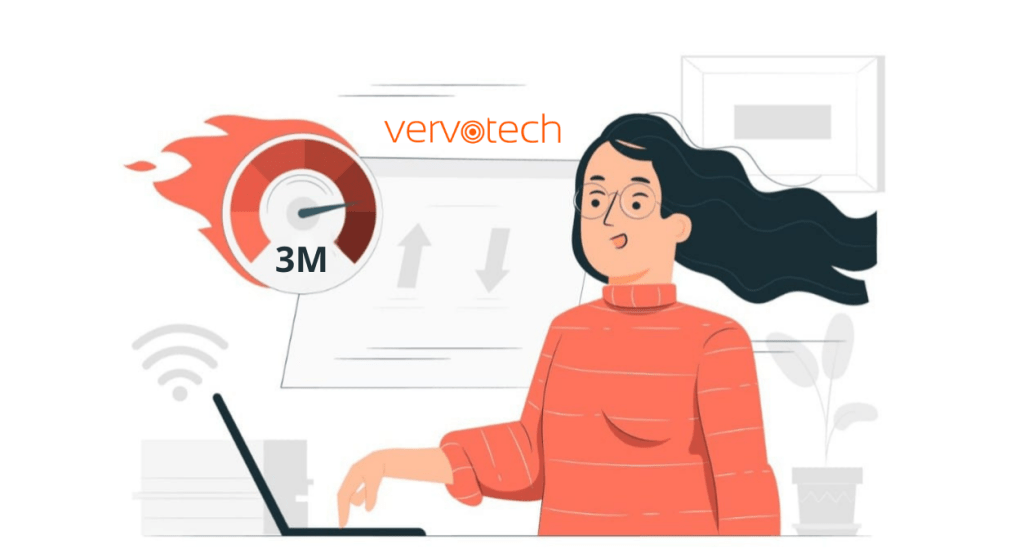
The hospitality distribution market is one of the most complex and largest among the other rival industries in a relative sense. For Hotels and OTA’s today, accurately merging multiple sources of data from suppliers is extremely challenging due to a lack of global standards. Managing a large database and providing the best hotel content to online users is one of the most tedious tasks when done manually due to the increments in data sets that companies need to work with regularly. Due to these large databases, the data displayed isn’t the same everywhere and can result in errors in booking all over the platform. At the centre of these challenges, the issue of tackling duplicate records stands as the most arduous task that needs to be addressed by modern global hotel OTAs, suppliers and distributors alike. To meet this need of the travel industry, travel technology companies are quickly starting to prove their worth. Travel tech companies are providing the industry with smart and intelligent solutions to give online users a seamless and hassle-free booking experience thus ensuring their retention in the long run. The technology that helps to resolve this issue of duplicate listings is called hotel mapping – a service that quickly identifies duplicates and ensures consistencies in hotel and room listings on any given platform. What is Hotel Mapping? Hotel mapping refers to the process of merging different property IDs from different suppliers into one unique property ID and providing users with unified and opinionated content. Duplication and inconsistency in hotel content usually occur when an OTA sources its data from different channels like the bed banks, GDSs, larger OTA’s, etc. that do not really conform to the same standard of distribution. Hotel Mapping is an excellent solution that adapts to online consumer needs. Hotel mapping can be done manually too but looking at the large databases that companies need to work with regularly today (that is constantly increasing) it can be an extremely tedious, time-consuming and labour-intensive process. To avoid this major problem of duplication and inconsistent listings, most of the OTA’s opt for automated hotel mapping platforms and aims to prevent the end-user from booking the wrong duplicate hotel. If you want to learn more about hotel mapping, we highly recommend going through this blog Hotel Mapping, where we delve into a much more detailed analysis of the topic. Does Mapping Speed matter in Hotel Mapping? In this fast-paced lifestyle and evolving travel businesses who wants to be a turtle in the race? Today, online users are searching for millions of properties every second and they want the best hotel rooms at the best prices within seconds. As a result, all suppliers and distributors in the ecosystem want to make sure that they can push the latest updated content of hotels in real-time for greater coverage. Today, over 148 million online travel bookings are made annually and for an OTA losing a customer due to poor online service can break their business. To overcome this pain point, most of the OTA’s are looking at automated hotel mapping software with high processing speed and accuracy so as to maintain consistencies across their platform. It is essential that the listings being made available to potential customers on online booking platforms are both accurate and updated so that the best possible properties can be displayed according to the search query. If multiple listings are present on a platform that relates to the same property, it ends up confusing the customer and results in incorrect bookings. Such incorrect bookings can not only incur losses but can seriously threaten the viability and damage the credibility of a brand over time. This pandemic has taught businesses to manage their finances smartly by not letting even a single user trickle through when it comes to conversions. In such a competitive market, giving users an easy and seamless booking experience has now become the most critical focus point for all OTAs. To provide users with fast and opinionated results, a fast hotel mapping tool is of utmost importance. Therefore, to answer the question, speed is definitely important and one of the most critical factors that contribute to the efficiency of any given system in the distribution network. We, at Vervotech, understand the importance of the role we tech companies play in the travel industry and we are constantly working towards bettering our products and services to better serve the travel businesses. Our AI-based hotel mapping API, Vervotech Mappings, leverage the power of machine learning to uniquely map hotel content with a 99.99% accuracy and can uniquely map hotels with a mapping speed of more than 3 million properties per day. Pretty cool, isn’t it? What’s cooler is the fact that we push updates multiple times a day with a coverage of over 98%! If you want to learn more about our hotel mapping software and the other services offered by Vervotech, visit us here for a guided showcase of our products.Vervotech Mappings is a leading Hotel Mapping and Room Mapping API that leverages the power of AI and ML to quickly and accurately identify each property listing through the verification of multiple parameters. With one of the industry’s best coverage of 98% and an accuracy of 99.999%, Vervotech Mappings is quickly becoming the mapping software of choice for all leading global companies operating in the travel and hospitality industry. To learn more about Vervotech Mappings and the ways it can enhance your business in the long run contact us: sales@vervotech.com
5 Reasons Why Your Travel Company Needs Hotel and Room Mapping Tools
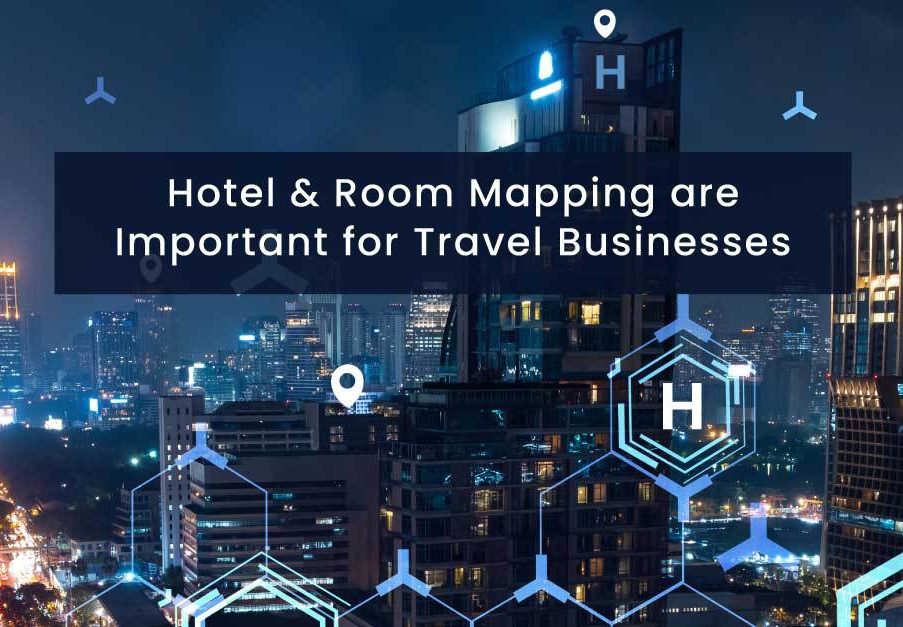
Are you an OTA or hotel distributor? Do you end up paying a refund to your customer by selling the wrong hotel or room due to duplicate or wrong or poor inventory description? If yes, then you need to understand hotel and room mapping. Currently, the accommodation segment of the hospitality industry relies on multichannel distribution to gather hotel data. Different accommodation providers such as metasearch, OTAs, tour operators, bed banks, consolidators, intermediaries, and suppliers, display the unique names of the exact same hotel or room, leading to duplication and bad customer experience. This ongoing industry-wide challenge can be solved through hotel and room mapping tools. Hotel mapping tool aggregates data of various hotel properties from different sources, resulting in standardized and unified hotel data. Some of the hotel data are hotel name, hotel address, geocodes, property type, hotel images, etc. Whereas room mapping tool works in a similar fashion as hotel mapping. It intelligently analyzes, identifies and sorts multiple rooms sent by different suppliers via various parameters such as room type, amenities, bed type, description, policy, etc., so that the same room does not get listed on your portal twice. Let’s dive into why your travel company needs hotel and room mapping tools. Why Hotel & Room Mapping are Important for Travel Businesses Here are five reasons why any business that sells hotels or rooms should invest in hotel and room mapping tools. #1 Remove duplicate hotel and room listings When tour operators or OTAs source hotel data from more than one supplier or distribution partner, there is a possibility of duplicate hotel data and inconsistent hotel listings. This duplication issue can hurt your travel business and end-user experience. To solve this, every travel business must invest in hotel mapping software. Automated hotel level mapping tool delivers standardized hotel data for each property and removes duplicate listings from your hotel inventory. Similarly, room level mapping provides enriched room content, both descriptive and illustrative, with zero duplicates. Recommended: Hotel Data Duplication: How To Solve The Growing Challenge For Hospitality Industry #2 Up-to-date hotel and room data Did you know your travel platform could be selling stale hotel content that could impact your business and customer experience? Stale content majorly occurs when you don’t keep up with the constant changes that hoteliers make, such as room availability, address change, new upgrades in amenities, etc. The ideal way to optimize hotel and room data is through mapping tools. Hotel and room mapping removes outdated and incorrect information and provides an up-to-date hotel property list and room content. This will ensure that your platform has the freshest content for your customers, enhancing your customer retention and brand loyalty. #3 Maximum hotel inventory coverage Did you know OTAs, tour operators sell only 60% of the hotel inventory? This results from unmapped hotel inventory, leading to business loss and missed booking opportunities. Hotel and room mapping gives you a business advantage to sell hotel inventory that was previously out of sight to customers. Currently, leading mapping providers offer maximum hotel coverage of 98%. #4 Hotel data ownership on distribution channels As an accommodation provider, it’s easy to lose ownership of your data in the swarm of multichannel distribution. But with the implementation of hotel and room mapping, you instantly regain control over how your data is showcased on distribution channel websites or portals. Mapping ensures that any change in your property listings is instantly reflected in the master database of the distribution partners. This way, irrespective of how often your data is distributed, you have complete ownership of your hotel and room data. #5 Smooth content distribution Due to the fragmentation of distribution channels, it becomes difficult for travel businesses to distribute hotel and room content efficiently. This causes data inconsistency, data unavailability, data loss, stale data. The good news is hotel and room mapping simplify hotel content distribution smartly, letting travel businesses focus on revenue-generating tasks and business-critical functions. As a travel business, you must have hotel and room mapping in your distribution strategy. Without mapping, your platform might have duplicate listings, inaccurate data, stale information, which can directly lead to revenue leakage, impact your customer booking experience and put your brand reputation at stake. It’s time to leverage technology, make mapping part of your business strategy, and deliver a frictionless end-user experience. Vervotech is a leading Hotel Mapping and Room Mapping API that leverages the power of AI and ML to quickly and accurately identify each property listing through the verification of multiple parameters. With one of the industry’s best coverage of 98% and an accuracy of 99.999%, Vervotech is quickly becoming the mapping software of choice for all leading global companies operating in the travel and hospitality industry. To learn more about Vervotech and the ways it can enhance your business in the long run contact us: sales@vervotech.com


